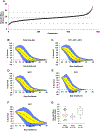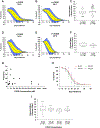Explaining inter-lab variance in C. elegans N2 lifespan: Making a case for standardized reporting to enhance reproducibility
- PMID: 34793939
- PMCID: PMC8938996
- DOI: 10.1016/j.exger.2021.111622
Explaining inter-lab variance in C. elegans N2 lifespan: Making a case for standardized reporting to enhance reproducibility
Abstract
The nematode Caenorhabditis elegans is a powerful model organism for studying cell development, apoptosis, neuronal circuits, and aging. The isolate N2 is recognized by the C. elegans community as the reference wild-type strain. Interestingly, the lifespan of presumably isogenic C. elegans N2 worms-even when grown under comparable conditions-varies significantly amongst distinct laboratories. This hinders the inter-laboratory comparability of C. elegans lifespan data and raises questions regarding data interpretation and reproducibility. Here, we hypothesized slight alterations in experimental design and worm handling could explain the observed discrepancies. To test this hypothesis, we collected and assessed data from over 1000 published C. elegans N2 lifespan assays as well as corresponding methodological meta-data. We find that mean N2 lifespans range from approximately 7 days to upwards of 35 days, despite laboratories disclosing seemingly comparable experimental conditions. We further demonstrate that, in addition to temperature, the use of the chemical sterilizer 5-fluoro-2'-deoxyuridine (FUDR) may change N2 lifespan. Additionally, we observed differences in average N2 lifespan from experiments originating from distinct geographic locations, indicating a potential effect of location-specific factors on experimental outcomes. Taken as a whole, our work indicates the sum of many small, rather than a few critical, differences in experimental conditions may account for the observed variance in N2 lifespan. We also find that the absence of standardized experimental methods and the insufficient disclosure of experiment details in the peer-reviewed literature limits the inter-lab comparability of published results. We thus propose the establishment of a succinct reporting standard for C. elegans lifespan experiments to increase the reliability and reproducibility, and thus scientific value, of these studies.
Keywords: Aging; C. elegans; Lifespan; N2; Reproducibility; Variation.
Copyright © 2021 The Authors. Published by Elsevier Inc. All rights reserved.
Figures





References
-
- Altun Z, Hall D, 2009. Introduction. Worm Atlas. 10.3908/wormatlas.1.1. - DOI
Publication types
MeSH terms
Substances
Grants and funding
LinkOut - more resources
Full Text Sources
Miscellaneous

